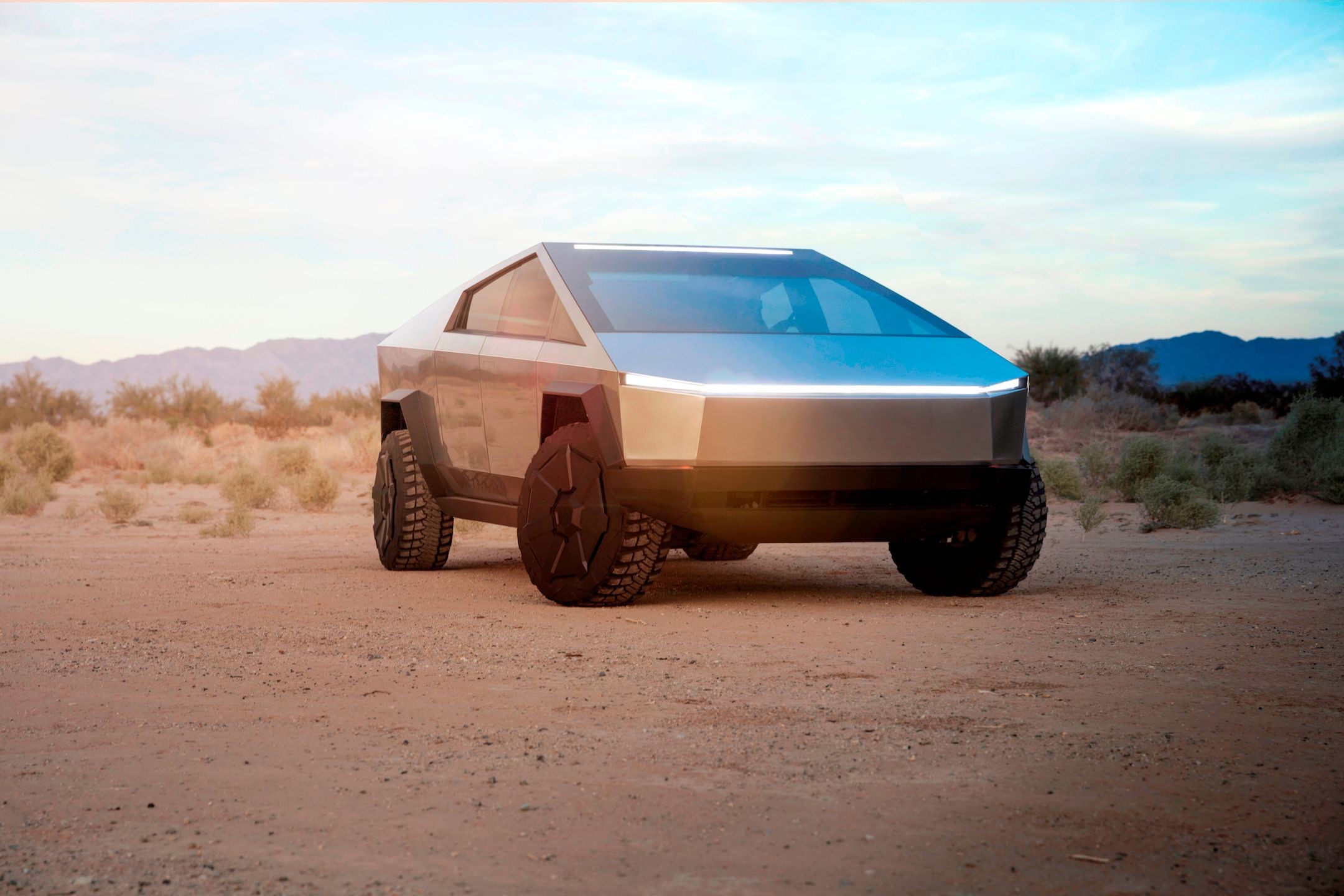The Tesla Cybertruck has undeniably captured the world’s attention since its unveiling, and with deliveries finally set to commence after a four-year wait, the hype is reaching fever pitch. However, alongside the fervent anticipation, a significant portion of the public remains unconvinced, primarily due to its polarizing, angular design. Could a redesign focusing on softer aesthetics broaden its appeal beyond the dedicated fanbase?
Enter graphic artist Dejan Hristov, whose portfolio already showcases a knack for automotive reimagination. Hristov has envisioned a Cybertruck Redesign that prioritizes a more conventional and sleek appearance, moving away from the sharp edges that define the original. This concept presents a front end that’s less aggressive and lines that flow more smoothly, resulting in a vehicle that appears considerably more approachable and arguably more practical, particularly in its side and rear profiles. A quick glance might even evoke comparisons to the Lucid pickup truck, a potential rival that has also been generating buzz in the electric vehicle space.
Hristov’s redesign maintains a futuristic essence but refines the Cybertruck’s stark geometry. Flush-fitted glass and carefully sculpted body panels replace the abrupt angles, resulting in a more contemporary truck design that distances itself from the “mobile corrugated steel workshop” descriptor often associated with the original. This approach to the cybertruck redesign considers the aesthetic preferences of a wider audience, potentially bridging the gap between Cybertruck enthusiasts and those who find the original design too extreme.
The side view of this Cybertruck redesign is particularly striking, lending a sporty impression to the electric pickup. The vehicle’s stance is assertive, projecting a sense of purpose and agility. There’s a hint of rally-inspired design, perhaps reminiscent of the Mitsubishi Pajero Evolution that conquered the Dakar Rally in 2004, suggesting a blend of ruggedness and performance. The rear of the redesign arguably represents the most successful transformation.
A streamlined light bar elegantly wraps around the rear, and integrated bumpers contribute to a cleaner, more finished aesthetic compared to the production Cybertruck. Hristov has also incorporated thoughtful additions, including a practical frunk drawer, offering a different approach to front trunk accessibility compared to the standard design, an active rear spoiler for enhanced aerodynamics, and a subtly integrated pop-up windscreen wiper, addressing practical concerns with elegant solutions.
Overall, this cybertruck redesign presents a more universally appealing vision, retaining the Cybertruck’s distinctive silhouette while softening its most controversial design elements. While it may not possess the same shock factor as the original, it’s likely to garner a more favorable reception from a broader spectrum of potential buyers.
Of course, automotive styling is inherently subjective. The considerable following the Cybertruck has already amassed demonstrates that Tesla’s bold design choices resonate with a significant audience. Tesla’s commitment to preserving the original concept’s radical design in the production version is evident, aiming for a near-identical translation from the 2019 reveal.
Earlier design explorations hinted at a more streamlined Cybertruck aesthetic, showcasing what the vehicle could have looked like with a less polarizing approach. However, Elon Musk explicitly aimed to disrupt the conventional truck design landscape, rejecting anything he considered “boring.” Musk has stated his design inspiration stemmed from science fiction movies and video games, prioritizing “coolness” and boundary-pushing over traditional truck aesthetics. This deliberate risk-taking undoubtedly generated significant media attention, achieving its goal of making headlines. However, this redesigned Cybertruck suggests that a slightly less radical approach might ultimately broaden the Cybertruck’s market appeal without sacrificing its futuristic edge.
